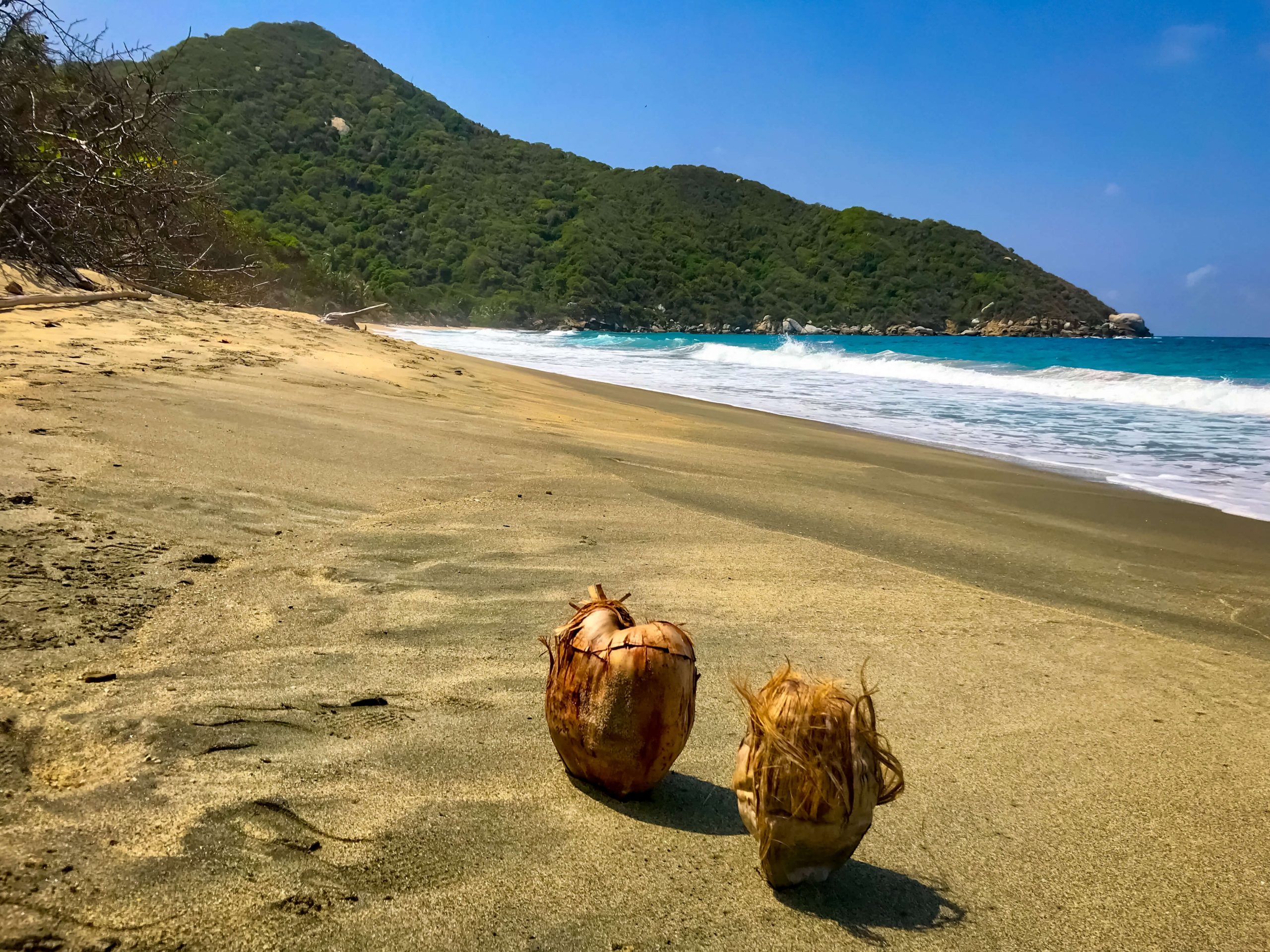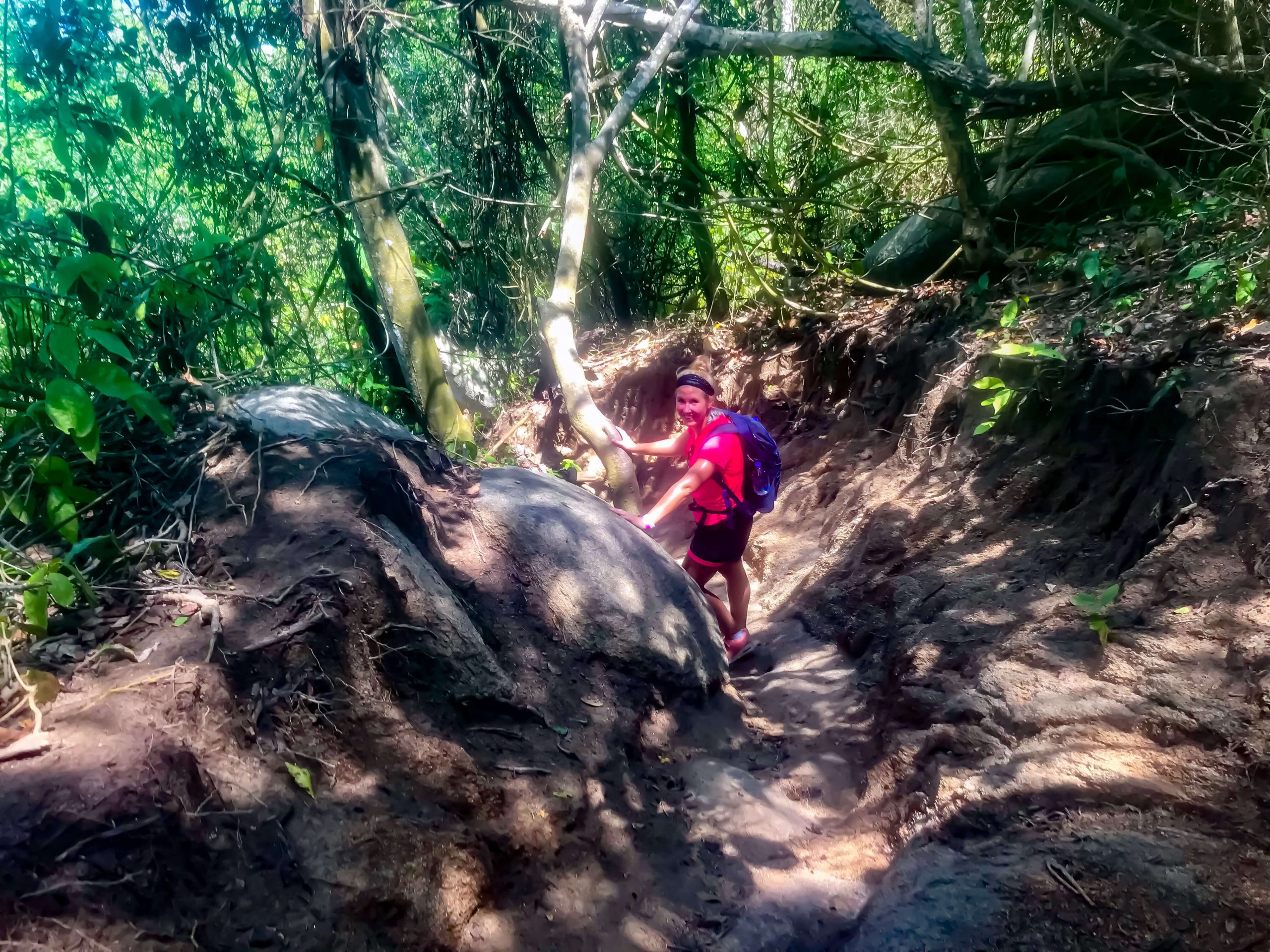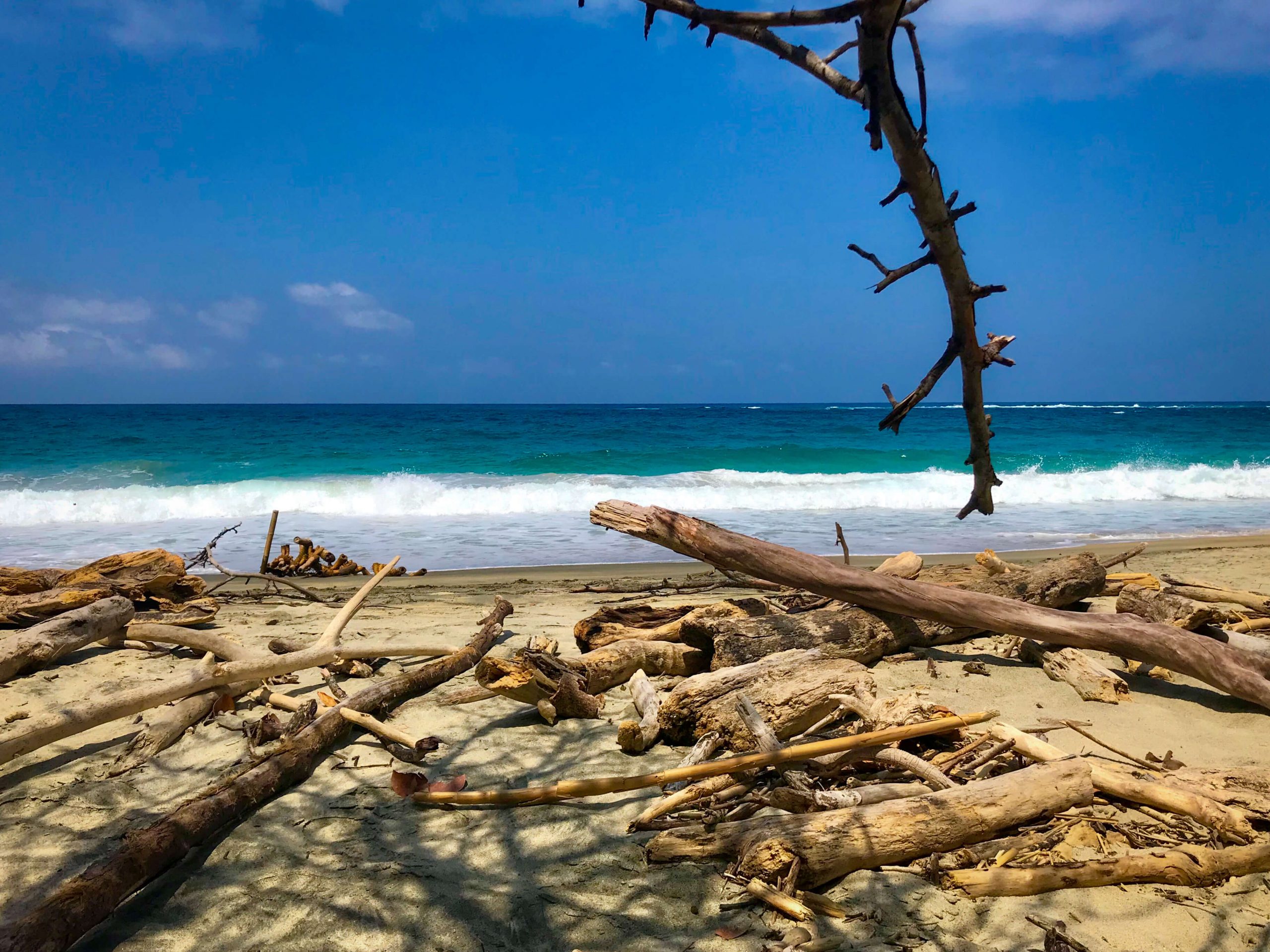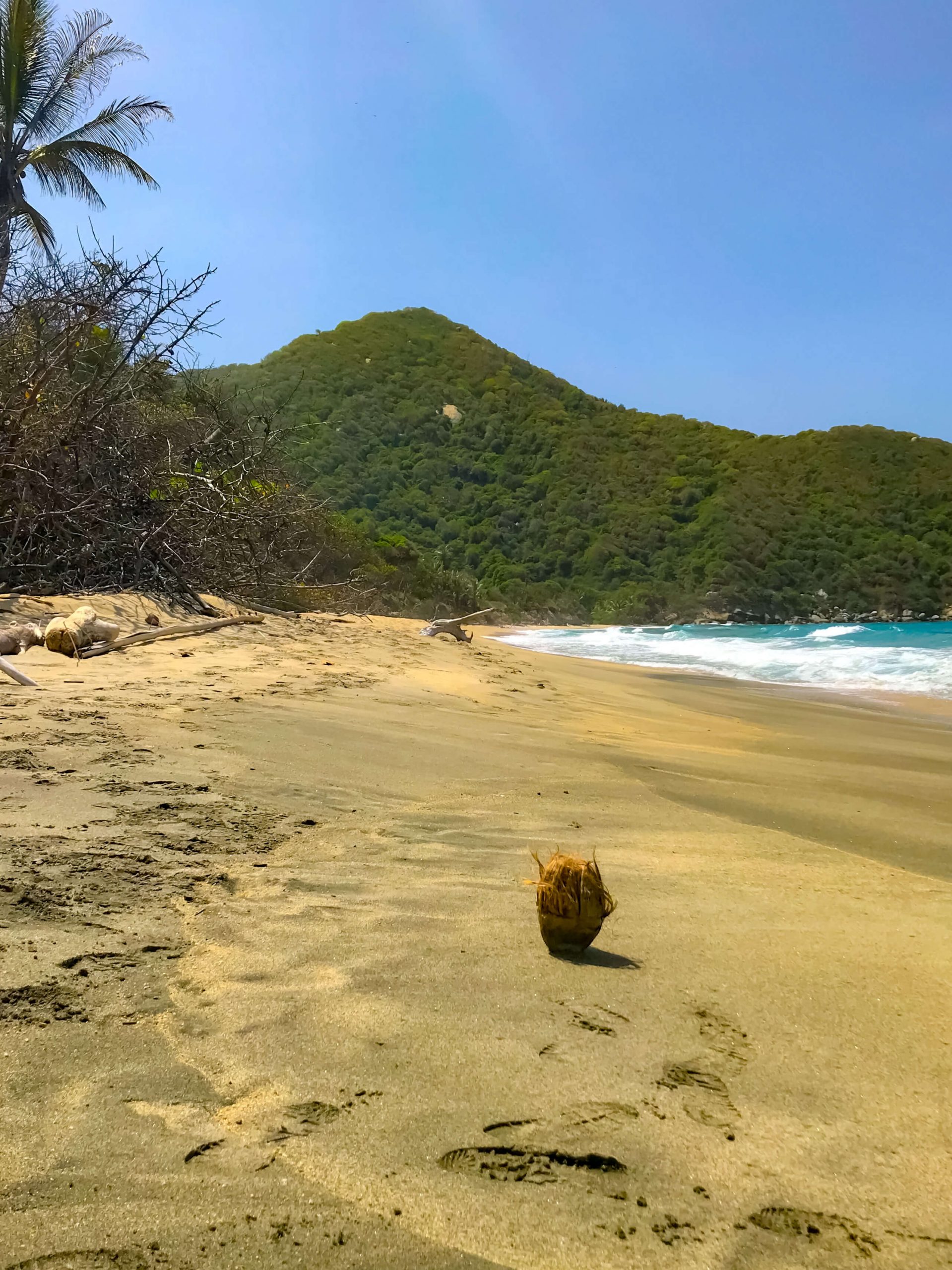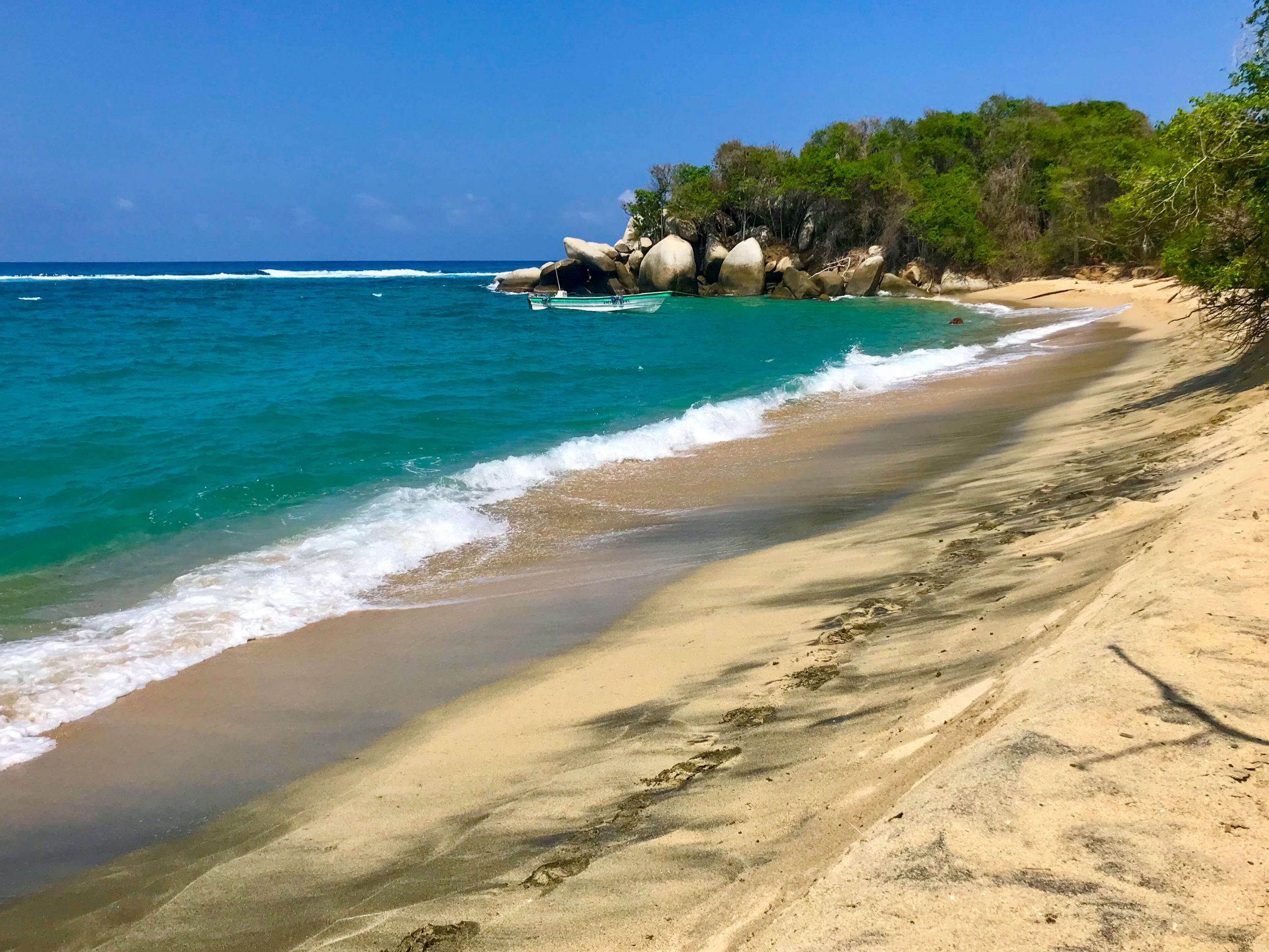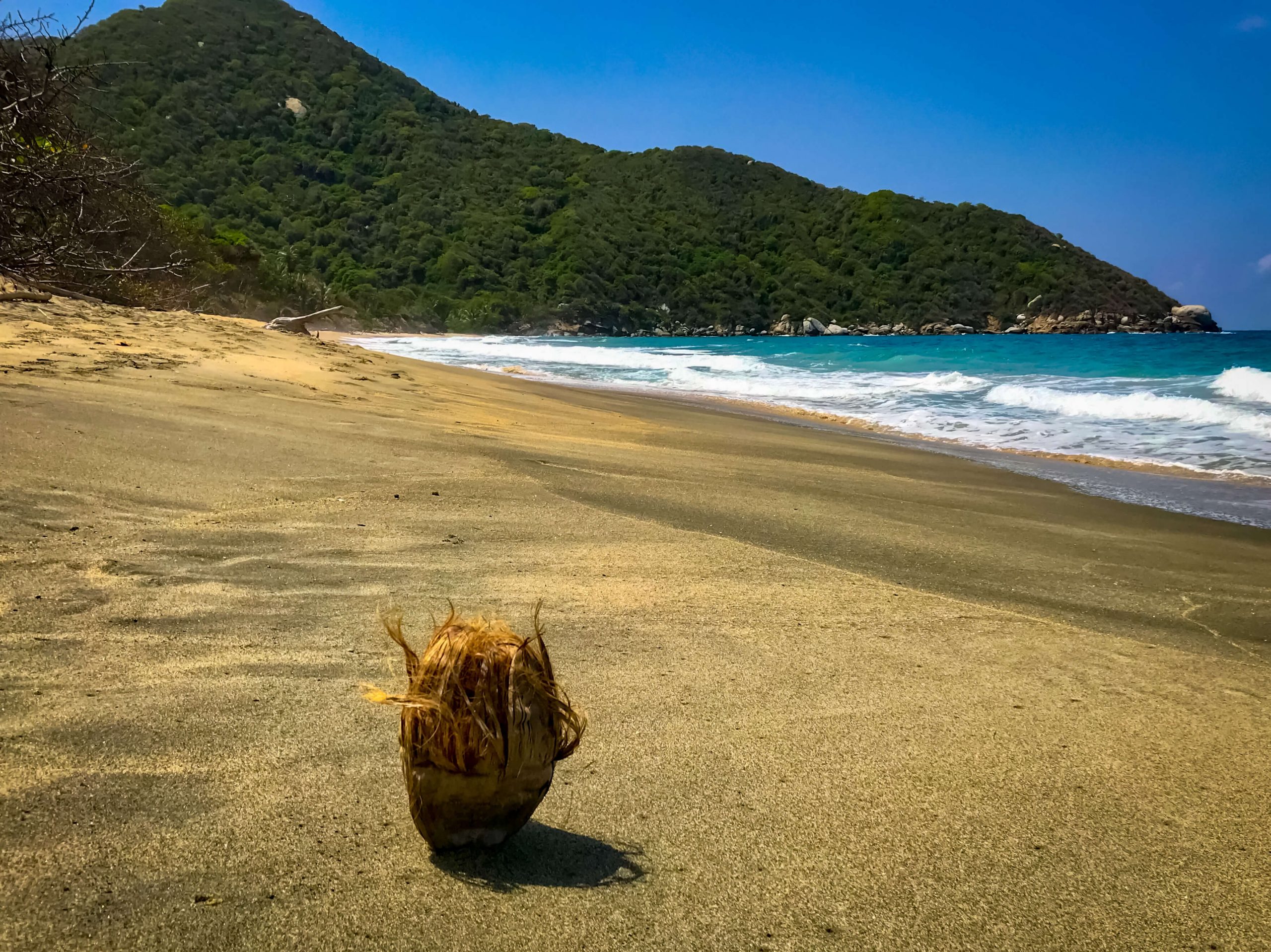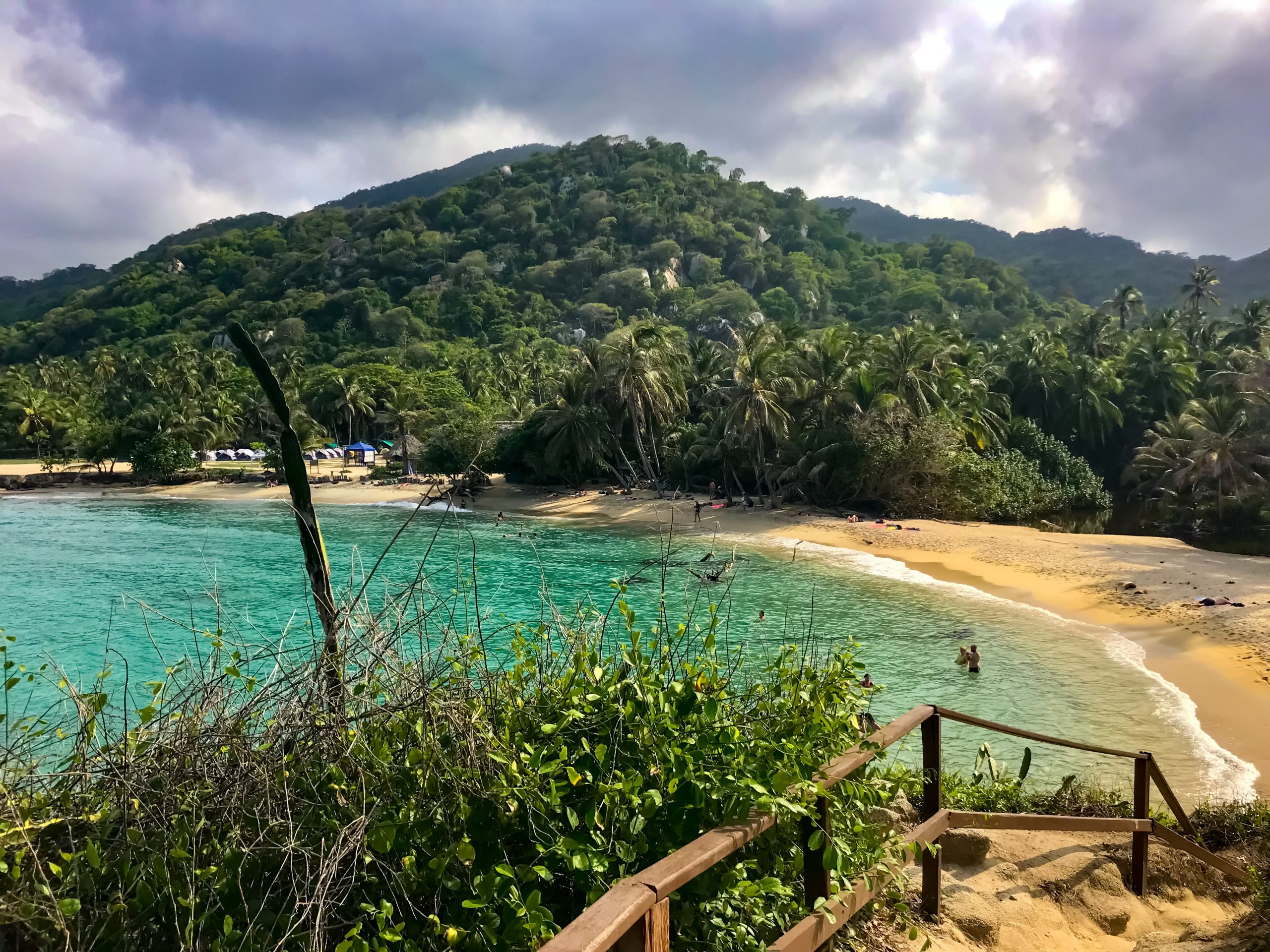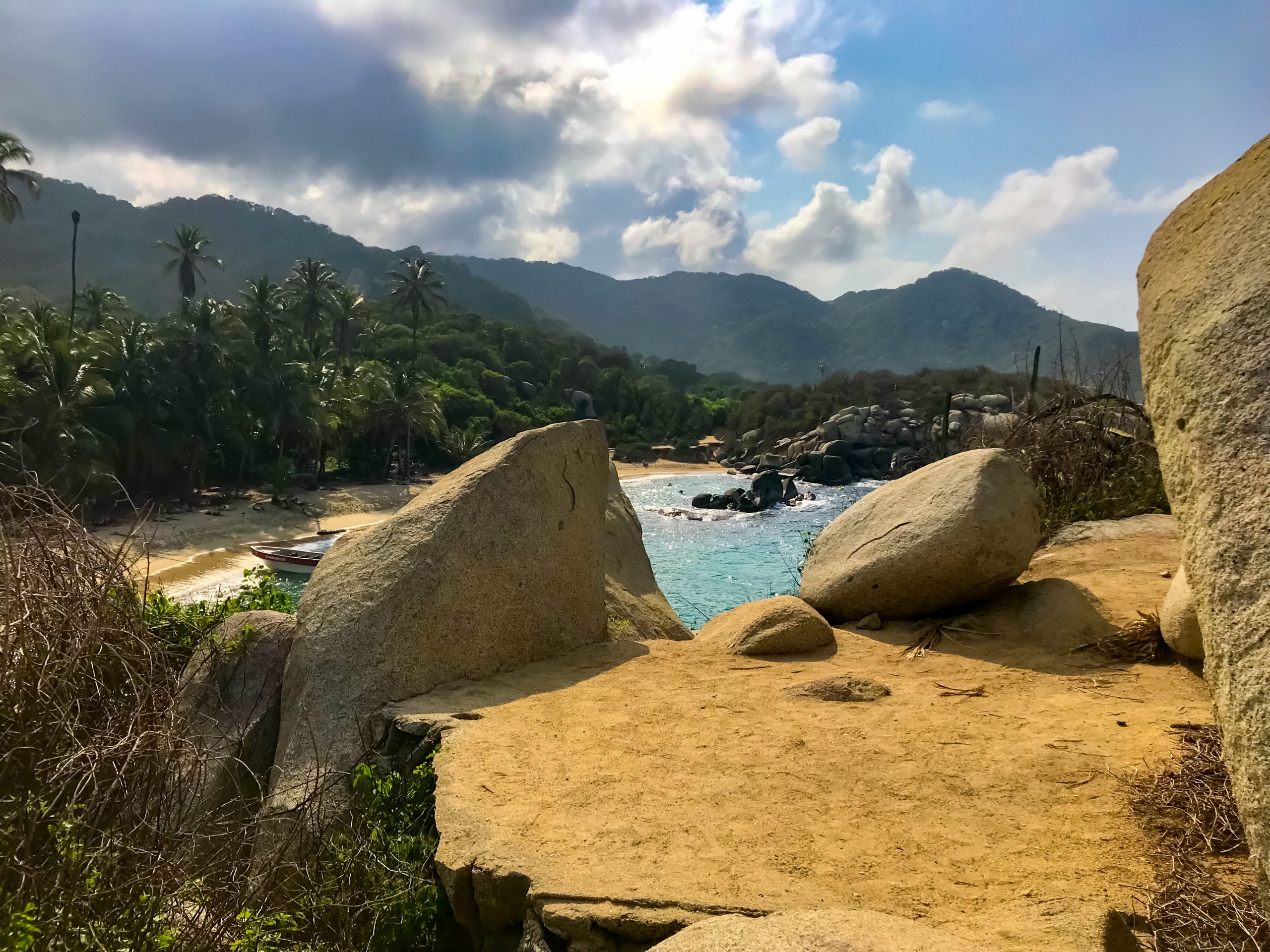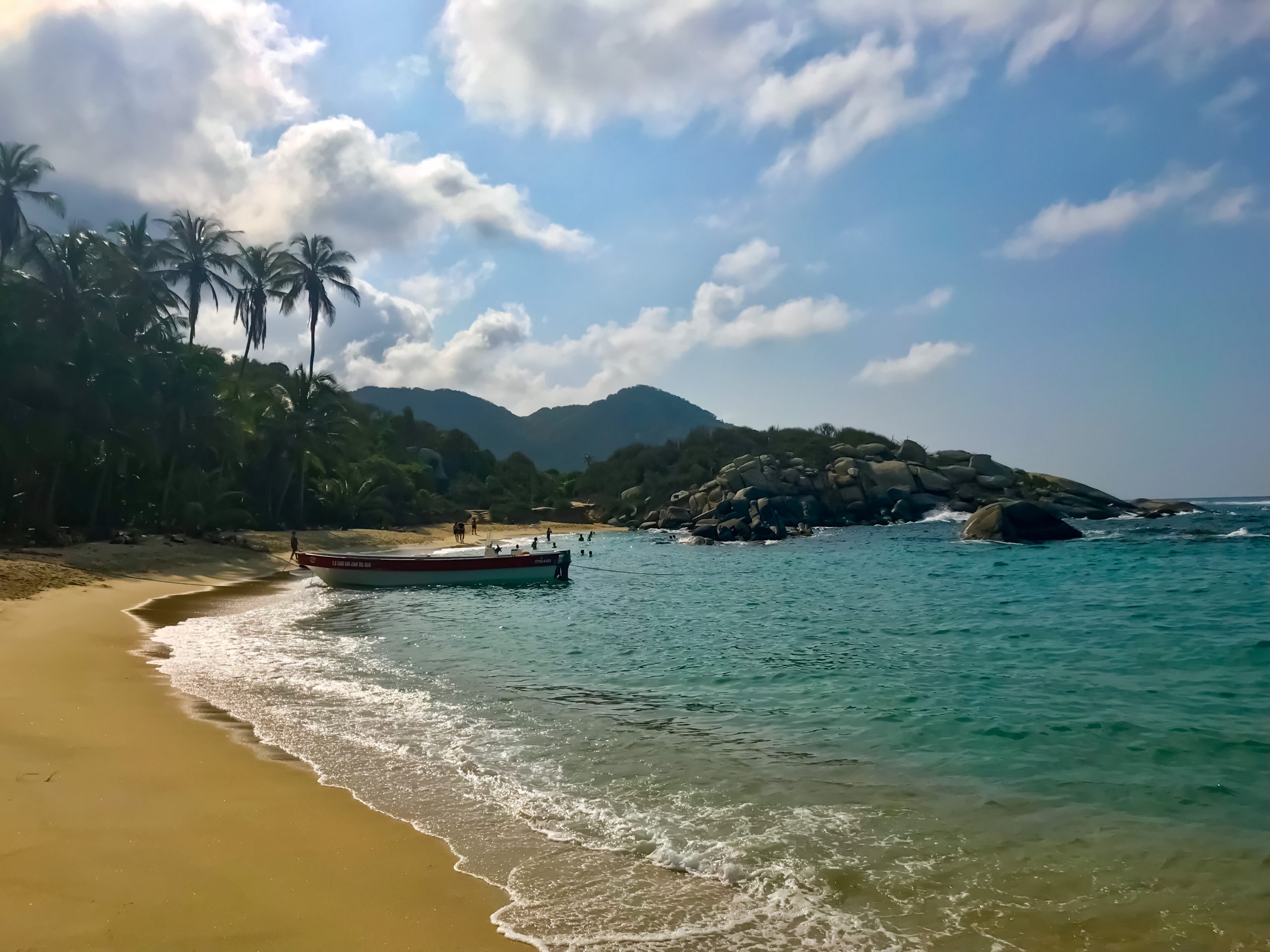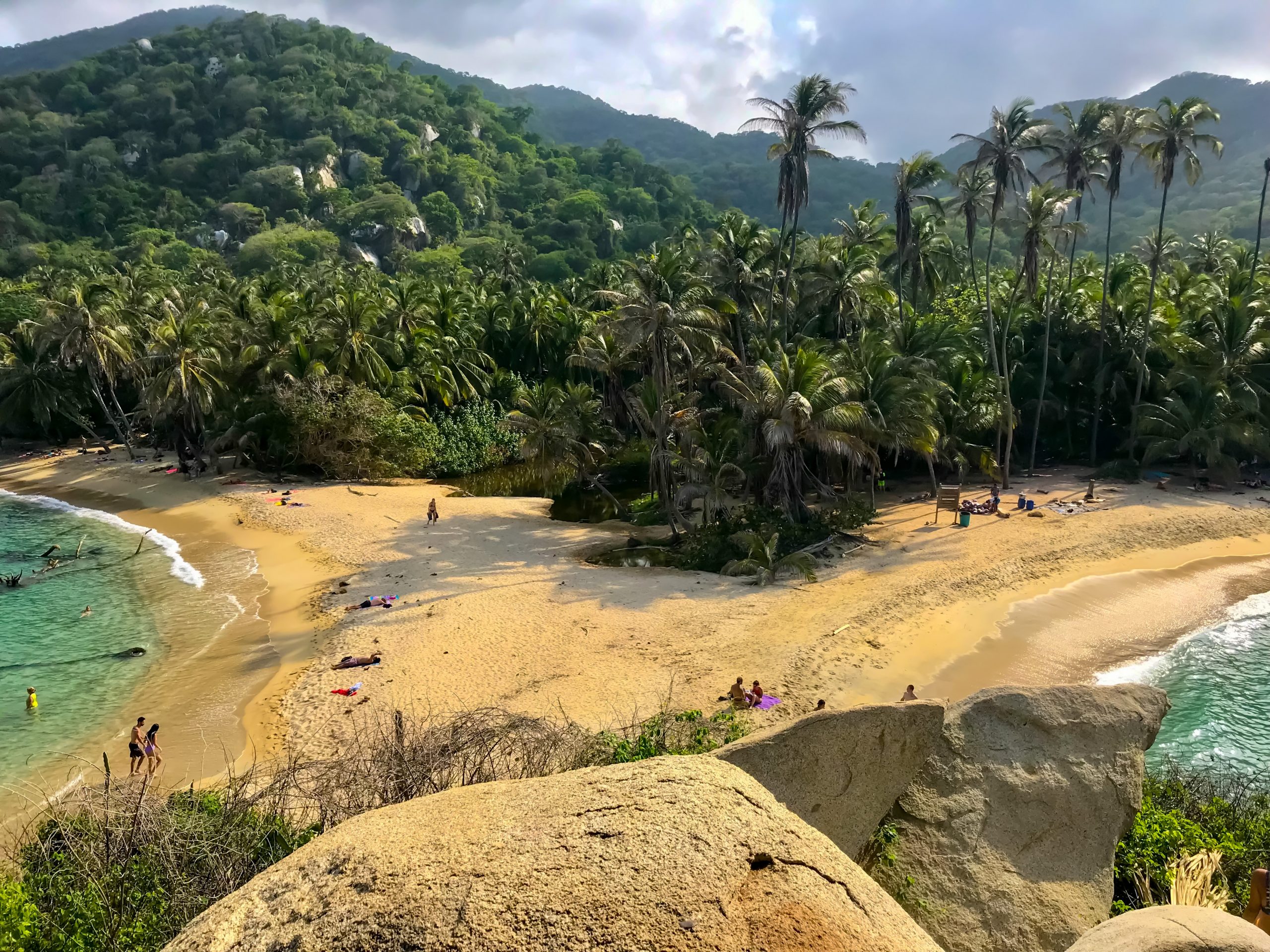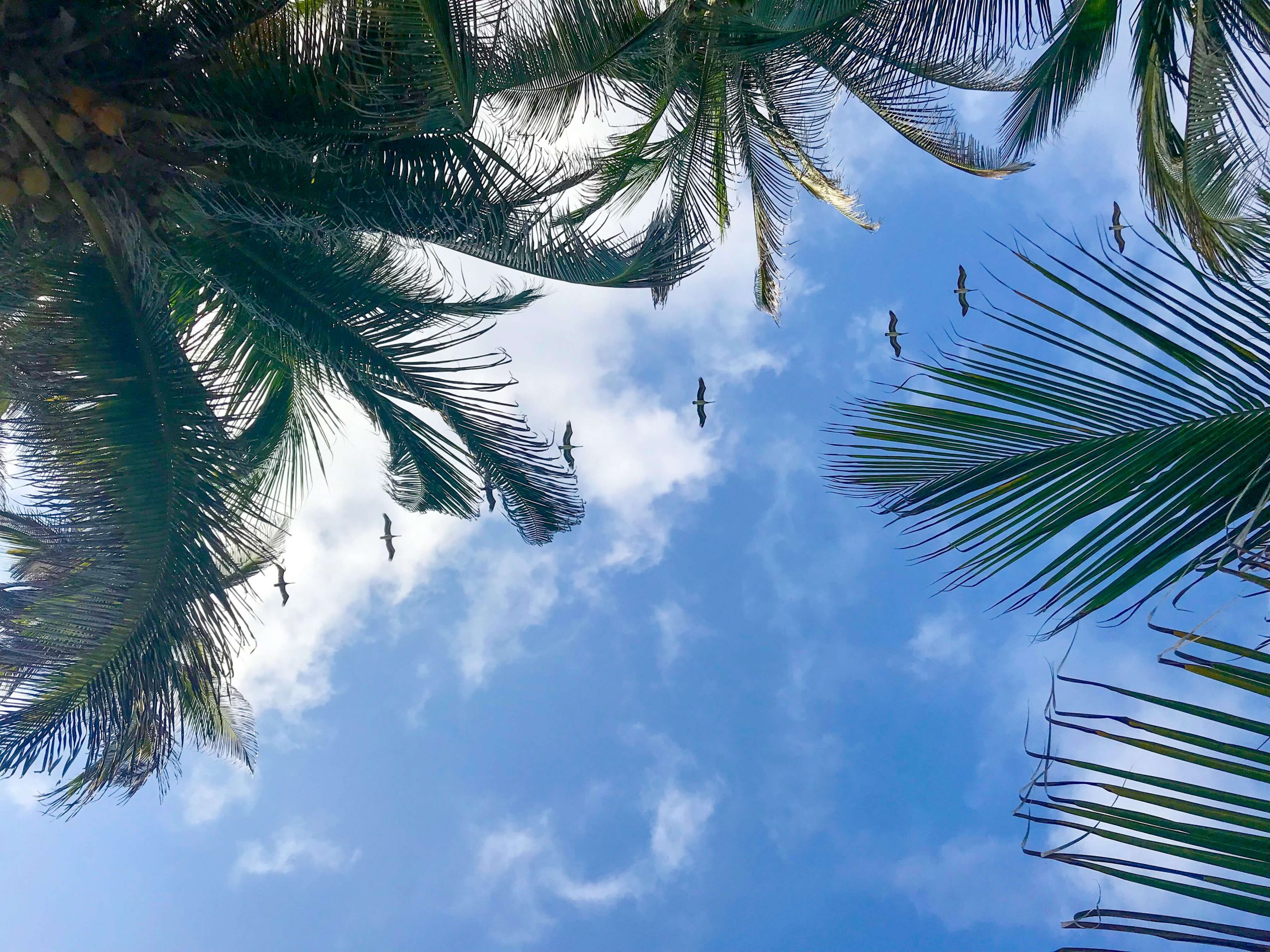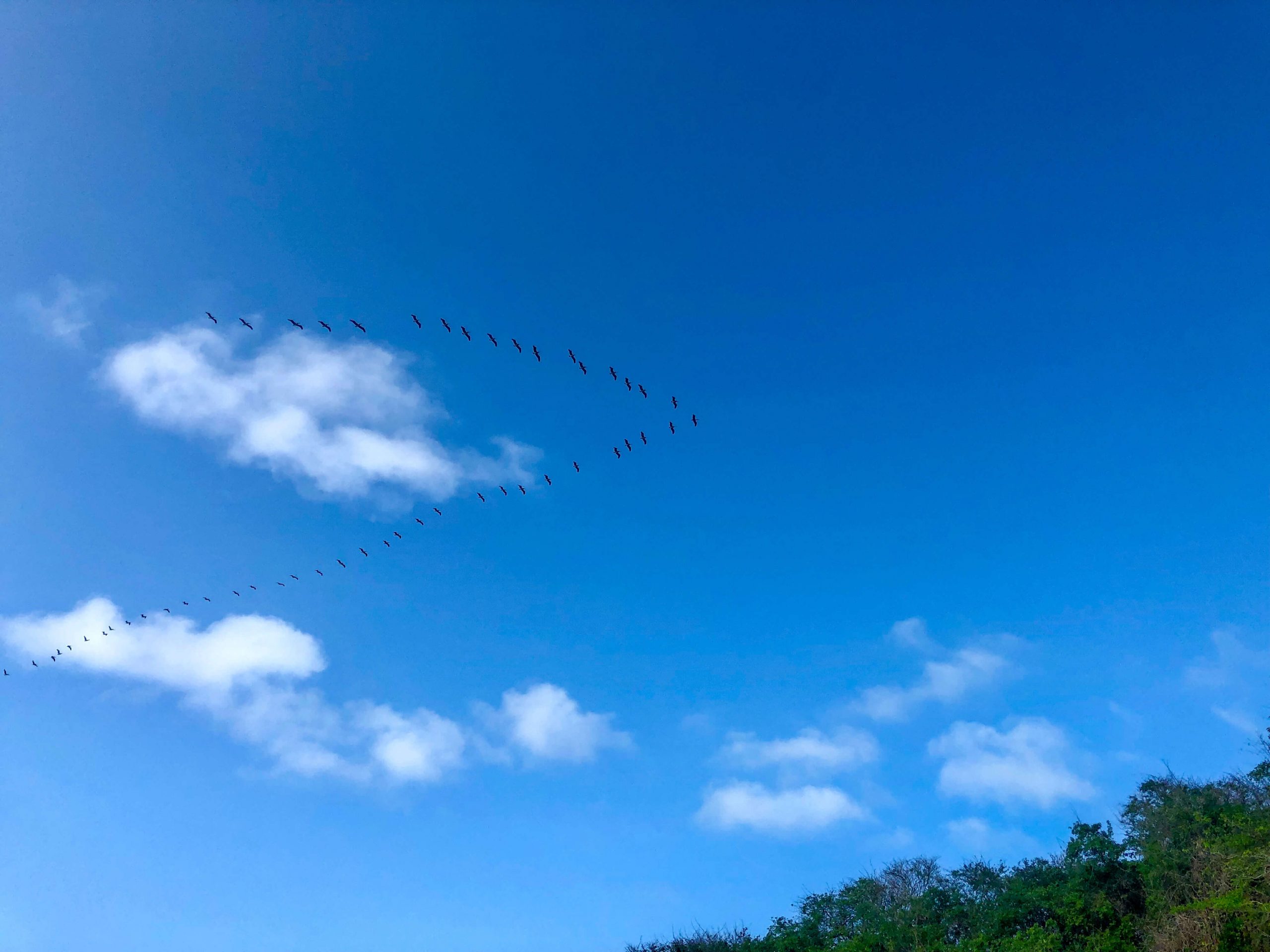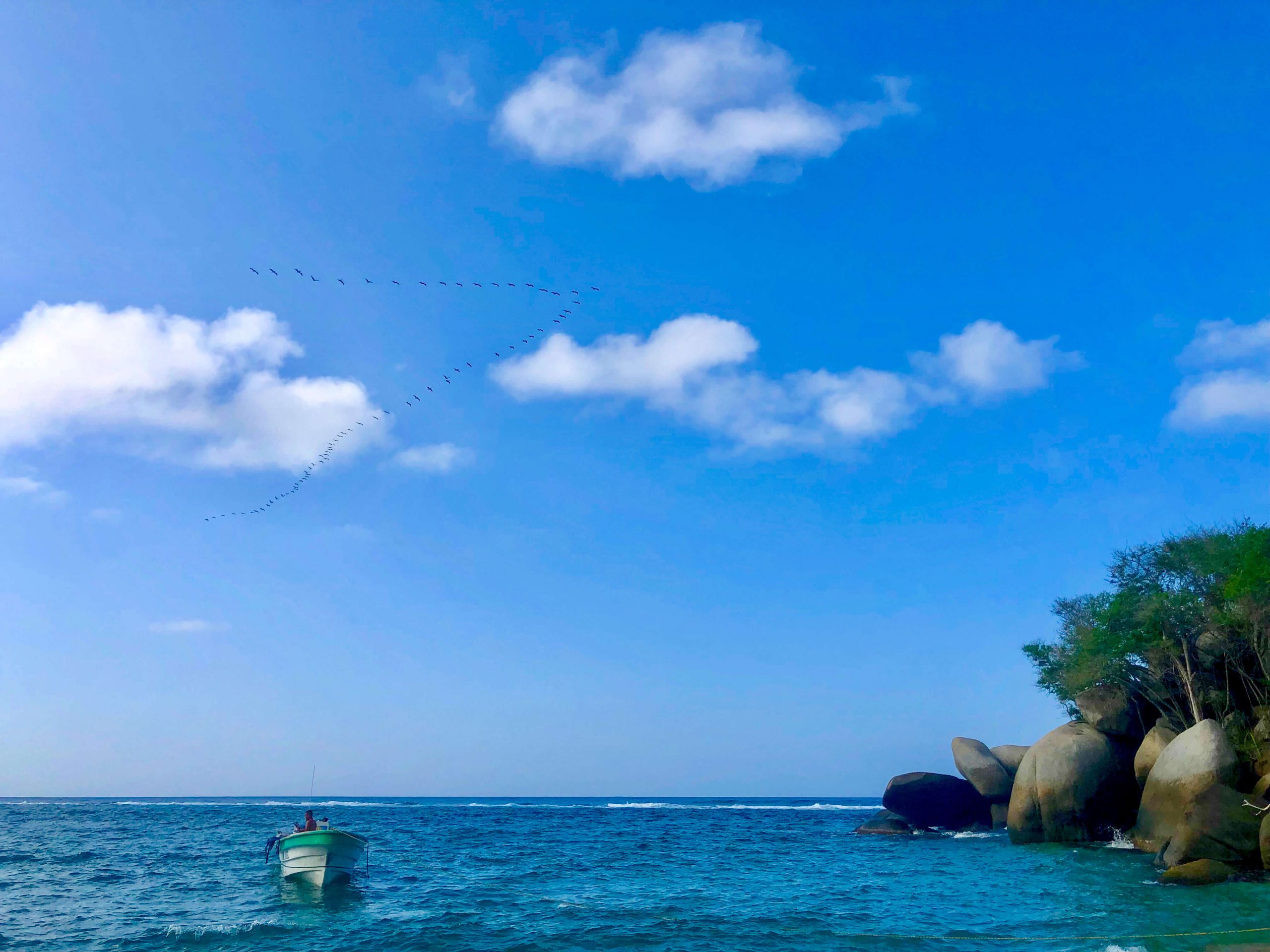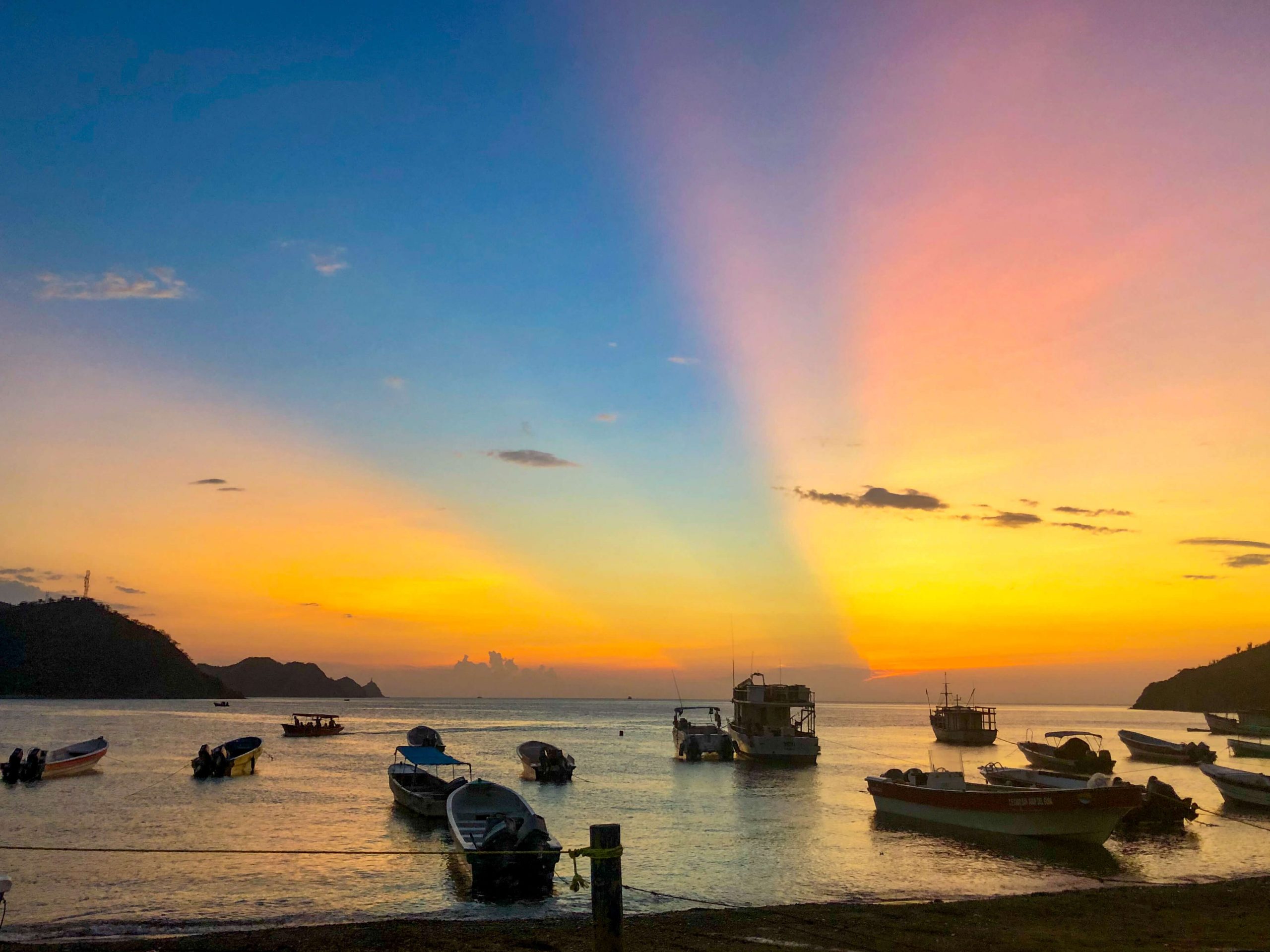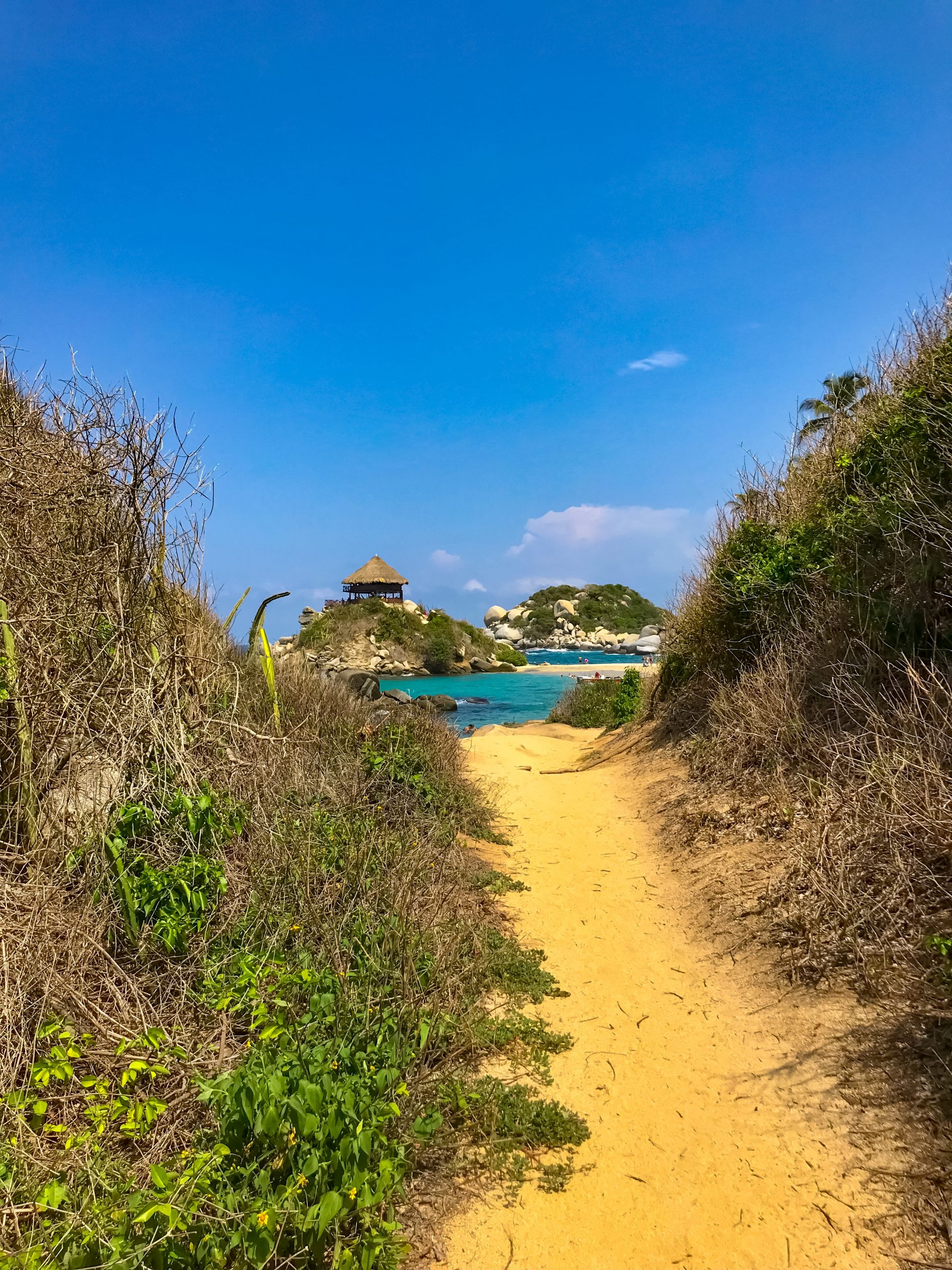The beautiful Tayrona National Park is located in the North of Colombia. At one side you’ll find the Caribbean Sea and at the other you can admire the mountains of Sierra Nevada de Santa Marta.
Although you could easily spend 2 or 3 days in Tayrona, we hiked there for one day only because of our tight travel schedule.
On the right is the exact route of our hike from Calabazo to Cabo San Juan. In this blog I’ll tell you more about the hike in Tayrona NP avoiding the crowd. Beware: this route is not for the faint of heart!
Route
The route to Cabo San Juan from Calabazo is not an easy trail. The Zaino route to Cabo San Juan is a ‘walk in the park’ – you can even skip the first part of the hike from the Zaino trail and take a bus – compared to this hardcore hike through the mountains.
The route from Calabazo entrance to Cabo San Juan is about 10 kilometres and we did it in about 4 hours. It’s very hilly and you’ll have to hike at steep and slippery paths. If you’re taking the Calabazo entrance it’s very likely that you’re not going to run into anyone else. It’s great if you want to avoid the touristy crowds!
Click here for the practical information at a glance.
How do you get there?
The best way to get to Tayrona NP is by public bus. There are supercheap buses (about 7.000 COP (€ 1,50) per person) from Santa Marta and from the east side of the park from Palomino. Our hotel was located in Taganga, a little north of Santa Marta, so we first had to take a bus to Santa Marta. The owner of the hotel tried her best to give us directions (in easy understandable Spanish) that we had to take the bus to Tayrona in Santa Marta at the “Mercado” (market). We had no idea really if we could find the Mercado, but we found the bus to Tayrona very easily. We bought some snacks (really good salted nuts!) and a lot of water at the shop next to the ticket office and we left Santa Marta when the bus was full.
Calabazo entrance
Where most people enter Tayrona from the main entrance El Zaino, we took the more challenging hiking path from the Calabazo entrance. Before we took off we told the driver we had to stop a couple of minutes before El Zaino, at the Calabazo entrance. After one hour the bus stopped and the driver told us to get out. We were the only two people getting off the bus at Calabazo.
At the entrance they check your passport, you’ll have to pay the entrance fee of 56,000 COP (about € 12,50) for foreigners and the required insurance costs of € 2,=. We were told that you needed proof of your yellow fever vaccination, so we also took our so called ‘yellow booklet’ (administration of all your vaccinations) to the park. We didn’t have to show it, but better safe than sorry!
Pueblito
We hiked from Calabazo to Playa Brava, with a little detour via Pueblito. Pueblito is an historical village, home to the indigenous Kogui people. Since February 2019 Pueblito is closed to visitors, but because we were lost we passed it anyway. And yes, the gates to Pueblito were closed so we didn’t see anything. During our hike we did see some Kogui walking by, with their heavy loaded donkeys.
The first beach we sat foot on was completely deserted, so we had the whole beach to ourselves! Unfortunately, you can not swim there and wash the sweat of your body because of the dangerous current (there are signs reminding you of that), so we just had a snack and admired the vast empty beach. Then we walked by the Nudist beach and on to Cabo San Juan.
It was a beautiful 10 kilometre hike through the jungle. At some points you’ll be rewarded with stunning views at the blue sea. It took us 4 hours to hike to Cabo San Juan. The signs in the park are not very clear, so a couple of times we were not sure if we were walking in the right direction; thank God for GPS!
Cabo San Juan
When we arrived, the beach of Cabo San Juan was already packed with tourists who took the Zaino entrance or stayed in Tayrona overnight. It is too bad that this beautiful beach, with it’s impressive outcrop, is so crowded. Fortunately we found a nice spot in the shadows of the trees to chill the rest of the afternoon.
Lunch at the restaurant at Cabo San Juan wasn’t special (we were very hungry and both just could use an ice cold beer!).
How to get back from Cabo San Juan
There are a couple of options:
- Walk to the Zaino entrance with the crowds at the end of the day;
- Hike all the way back to the Cabalazo entrance (you’ll have to leave Cabo San Juan early, because it takes about 4 hours);
- Take a boat to Taganga;
- Stay overnight (and leave the day after).
We took the boat. The first thing we did when we arrived at Cabo San Juan beach, was buying a boat ticket back to Taganga (about 40,000 COP (circa € 9,=) per person), before it was fully booked. If you’re staying overnight or take the boat, you can stay a little longer on the beach. We liked that very much because the beach was becoming less and less crowded in the afternoon, because most of the people had to walk back before dark.
At 4 pm we left with a very crowded boat. It was quite a bumpy ride for 45 minutes (luckily nobody went seasick!). One of our reasons for taking a hotel in Taganga was that we didn’t have to take a bus to Santa Marta in our completely soaked outfits.
At the boulevard in Taganga we could immediately enjoy a cocktail and a stunning sunset after we arrived.
Practical information
Even though the trail is steep and slippery at some parts, you can do this hike on normal sneakers. I wouldn’t recommend wearing flip-flops, because then it will be even more challenging and you never know what’s going to bite you in the you toe.
Don’t swim!
I know, it is very tempting to run right into the water after such a long hike and you finally see the sea. But don’t do it. It’s not safe to swim at many places in Tayrona. You can swim at Cabo San Juan and La Piscina, but also at those places you have to be aware of the dangerous riptide. At the other beaches the current is very strong and dangerous.
NB. There are signs everywhere to remind you that you can’t swim there. The signs also indicate how many people drowned at that place!
Packing list (for 1 day at Tayrona):
- WATER!
- Passport;
- Proof of your yellow fever vaccination;
- Swimsuit and towel;
- Anti-mosquito;
- Sunscreen;
- Small towel to wipe your sweat;
- Camera;
- Snacks for energy;
- Flip-flops;
- (Head)torch, if you miss the boat and have to walk back;
- Water resistant bag to protect your phone/camera against the humid air, sweat and the boat trip back to Taganga.
Leave at home:
- Don’t bring alcohol! It’s prohibited and the guards can check your back. But don’t worry, you can buy cold beers at the restaurants inside the park;
- Plastic bags are also not allowed, that’s why I usually take a foldable canvas bag with me on a trip.
Prices
- Public bus from Santa Marta to Tayrona costs about 7.000 COP (€ 1,50) per person;
- The park entrance fee is 56,000 COP (about € 12,50) for foreigners;
- A one way boat trip from Cabo San Juan to Taganga beach costs about 40,000 COP (about € 9) per person;
Spending the night
There are a couple of places in the park where you can spend the night, varying from back-to-basic hammocks and tents to more luxurious cabanas and hotels. Since I didn’t stay for the night, I can’t tell you about my experience. Please leave a comment if you have recommendations to spend the night in Tayrona.
Practical tips (summary)
- Take the Calabazo entrance to avoid the crowds;
- Be prepared when you go for the hike (see ‘packing list‘);
- Take plenty of water;
- Wear sneakers;
- Watch the signs and bring a phone with GPS so you don’t get lost;
- Don’t go to Pueblito, because it’s closed for visitors;
- Don’t swim unless you’re sure it’s safe;
- Buy your return ticket for the boat to Taganga immediately when you arrive at Cabo San Juan;
- Enjoy the beautiful hike!
More information about the round tour in Colombia is coming soon at TeppieTravels.com. Click here for more travel inspiration for South America.
Schrijf je in met je e-mailadres en blijf op de hoogte van nieuwe updates van TeppieTravels.com.

